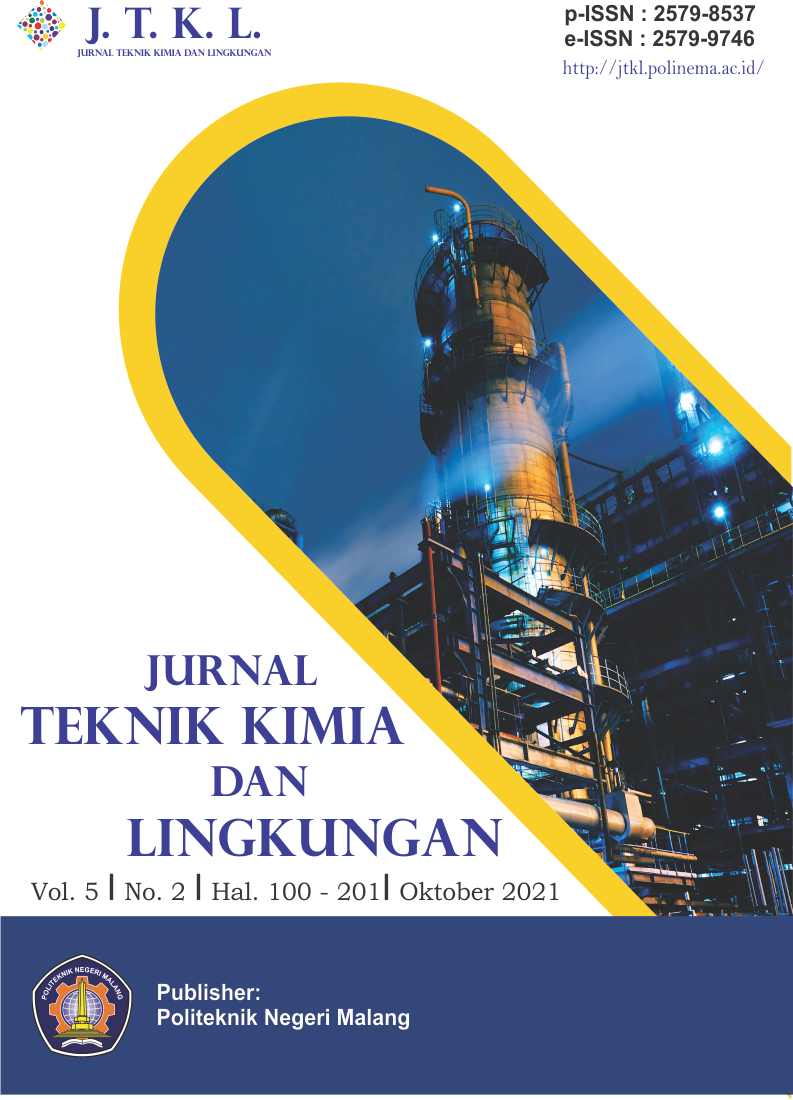Pemodelan Dinamik Solar Cell dengan Metode Pendekatan Shepherd Modifikasi
DOI:
https://doi.org/10.33795/jtkl.v5i2.228Keywords:
discharge solar cell, modeling, Shepherd, simulation, solar cellAbstract
Pemerintah Indonesia menargetkan konsumsi listrik sebanyak 1.129 kWh/kapita pada tahun 2018. Energi alternatif terbarukan merupakan salah satu solusi dalam mengatasi masalah kenaikan konsumsi listrik yang bertambah setiap tahunnya. Salah satu dari energi alternatif terbarukan adalah solar cell. Solar cell yang digunakan pada mobil listrik sebagai pengisi daya dapat membantu mengurangi konsumsi listrik konvensional. Penelitian ini dilakukan untuk memprediksi kondisi optimum serta cara pengontrolan sebagai sumber energi yang dapat dimanfaatkan. Metode yang dilakukan untuk memprediksi kondisi optimum solar cell adalah dengan pemodelan Shepherd yang tahapannya meliputi pemodelan simulasi solar cell untuk rangkaian, pemodelan simulasi solar cell Shepherd untuk kendaraan listrik (EVs), dan model sirkuit ekuivalen. Kemudian, menyusun pendekatan pemodelan dengan penyusunan persamaan voltase dan arus discharge serta memberikan asumsi-asumsi pada parameter model. Parameter-parameter discharge solar cell berdasarkan data manufaktur yaitu Qfull 1034,32031 mAh/gram, Vfull 17,5177 Volt, Qexp 999,2730931 mAh/gram, Vexp 11,46641134 Volt, Qnom 0,854810174 mAh/gram, Vnom 0 Volt, SOCmin 9,67% dan SOCmax 95,05%. Dari hasil algoritma data simulasi didapatkan parameter-parameter discharge solar cell yaitu E0 12,53704928 Volt, R0 0,012 mΩ, Kdr 0,01 mΩ, Kdv 0,044148043 Volt/mA.h, A 4,9956 Volt, B 2,971366829 (mA.h)-1, SOCmin 9,67% dan SOCmax 95,05%.
The Indonesian government targets electricity consumption of 1.129 kWh/capita in 2018. Renewable energy alternative energy is one solution in overcoming the problem of increasing electricity consumption which increase every year. One of the renewable alternative energy is solar cell. Solar cells used in electric cars as chargers can help reduce conventional electricity consumption. This research was conducted to predict the optimum conditions and how to control it as an energy source that can be utilized. The method used to predict the optimum condition of the solar cell is Shepherd modeling whose stages include solar cell simulation modeling for circuits, Shepherd solar cell simulation modeling for electric vehicle (Evs), and equivalent circuit models. Then, develop a modeling approach by compiling the equations of voltage and discharge current and provide assumptions on the model parameters. The discharge parameters of the solar cell based on manufacturing data are Qfull 1034,32031 mAh/gram, Vfull 17,5177 Volt, Qexp 999,2730931 mAh/gram, Vexp 11,46641134 Volt, Qnom 0,854810174 mAh/gram, Vnom 0 Volt, SOCmin 9,67% and SOCmax 95,05%. From the results of the simulation data algorithm, the parameters of the solar cell discharge are E0 12,53704928 Volt, R0 0,012 mΩ, Kdr 0,01 mΩ, Kdv 0,044148043 Volt/mA.h, A 4,9956 Volt, B 2,971366829 (mA.h)-1, SOCmin 9,67% and SOCmax 95,05%.
References
Kementerian Energi Sumber Daya Mineral. Capaian 2017 dan Outlook 2018 Subsektor Ketenagalistrikan dan EBTKE.
B. Guo, J. Wu, J. Qun, Q. Han, The Lithium-ion Battery Standby Power of Wind Turbine Pitch System, Energy Procedia, vol. 105, hal. 3539–3544, 2017.
M. Durr, A. Cruden, S. Gair, J.R. McDonald, Dynamic Model of a Lead Acid Battery for Use in a Domestic Fuel Cell System, J. Power Sources, vol. 161, no. 2, hal. 1400–1411, 2006.
E. Kuhn, C. Forgez, P. Lagonotte, G. Friedrich, Modelling Ni-mH Battery Using Cauer and Foster Structures, J. Power Sources, vol. 158, no. 2, hal. 1490–1497, 2006.
P. Mauracher, E. Karden, Dynamic Modelling of Lead/acid Batteries Using Impedance Spectroscopy for Parameter Identification, J. Power Sources, vol. 67, no. 1-2, hal. 69–84, 1997.
C. M. Shepherd, Design of Primary and Secondary Cells - Part 2. An Equation Describing Battery Discharge, J. Electrochemical Society, vol. 112, hal. 657– 664, 1965.
C. Zhao, S. Dong, F. Li, Y. Song, Optimal Home Energy Management System with Mixed Types of Loads, CSEE J. Power and Energy Systems, vol. 1, no. 4, hal. 29–37, 2015.
O. Tremblay, L.A. Dessaint, Experimental Validation of a Battery Dynamic Model for EV Applications, J. World Electric Vehicle, vol. 3, hal. 289–298, 2009.
S. Li, B. Ke, Study of Battery Modeling using Mathematical and Circuit Oriented Approaches, IEEE Power and Energy Society General Meeting, hal. 1–8, 2011.
R. Rao, S. Vrudhula, D.N. Rakhmatov, Battery Modeling for Energy-Aware System Design, Computer, vol. 36 no. 12, hal. 77–87, 2003.
Downloads
Published
Issue
Section
License
Copyright (c) 2023 Wahyu Diski Pratama, Bidayatul Khoiriyah, Bella Octa Avenia, Supriyono

This work is licensed under a Creative Commons Attribution-NonCommercial 4.0 International License.







